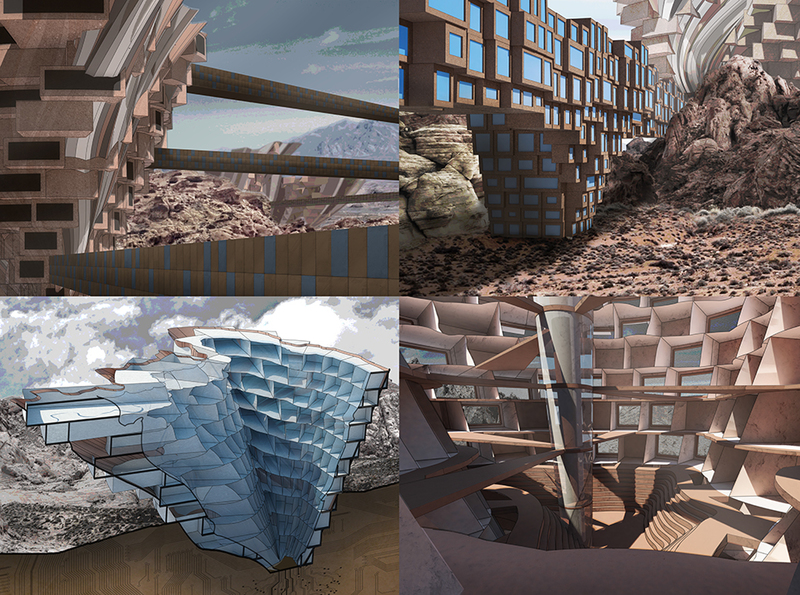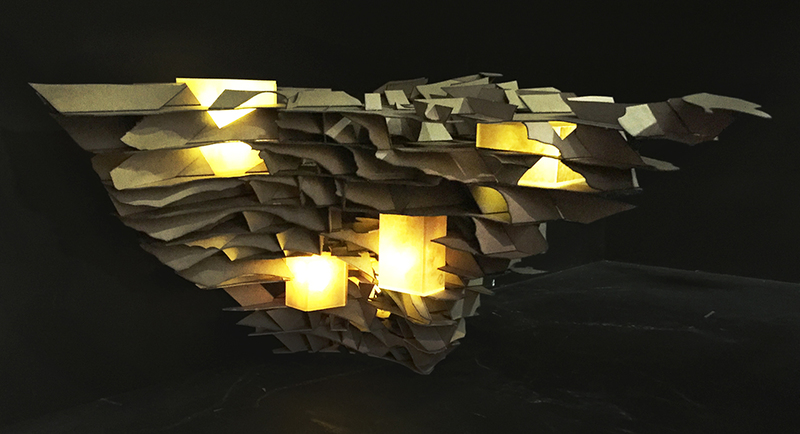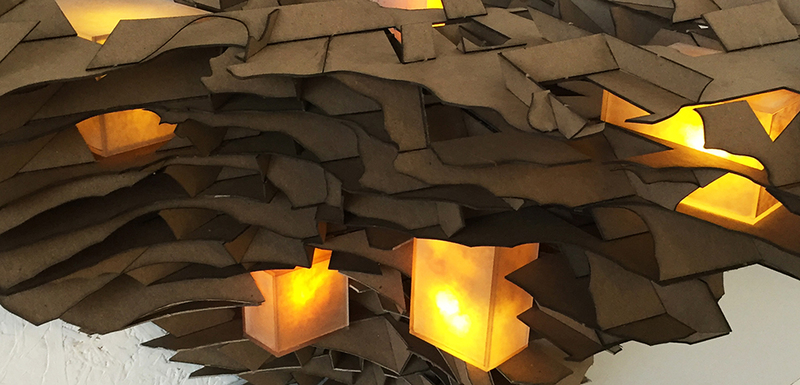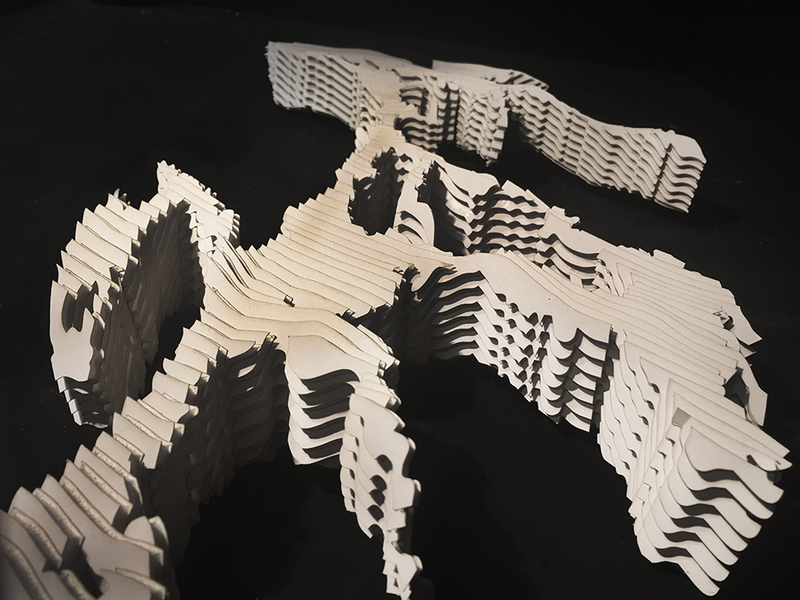Collaborative Commons – Post-Capitalism in the Valley of Fire
Kevin Rosenberg
University of Michigan, Taubman School of Architecture and Urban Planning
Propositions Studio – Compressions, Substrates, and Control
Brief: Collaborative Commons – Post-Capitalism in the Valley of Fire
Faculty: Dawn Gilpin
2015
Using the Valley of Fire as a backdrop, Nevada’s relentlessly inhospitable desert-like environment that the city of Las Vegas calls home, Rosenberg explores how architecture can adapt to and influence the transition to a post-capitalist society.
The space aims to distance itself from the capitalist values that rely on constant production and and unconstrained consumption.
In a post-capitalist society, people are liberated from those constraints and a greater emphasis is put on the creation, intellect, and the sharing of ideas, skills, and resources.
The Collaborative Commons superstructure acts as a tool to leverage the slow transition towards the post-capitalist society, a movement which Rosenberg believes to already be in motion.
The project is in large part based on sociologist Jeremy Rifkin’s theory that certain technological advances are driving direct changes in societal behaviors.
Rifkin argues that society is reorganizing itself to form a new social order based on the factors of: free access to information on the Internet, the decentralization and customization of manufacturing, the rise of the sharing economy, and the decentralization and modernization of renewable energy production.
Inspiration for the design comes from local Moapa Indian rock engravings, thought to have been left there by the tribe more than 2,000 years ago.
The logic behind this deliberate search for local roots is to look beyond ideas conceived within the socio-economic constraints imposed by the capitalist period.
The masterplan is created around a series of functions: clusters of individual habitations, spaces for transmitting ideas and collaborating, and transportation axes defined by the topographical landscape.
The structure itself is modular and can expand or connect with other structures based on the growing adherence to the community and its’ values.
Check out more outer-worldly designs in our UNBUILT blog series and on Pitcrit.com.
Click and hold to rotate model.
Click and hold to rotate model.
 ↑ A series of experiments within the site begins to identify and extract design ideologies that can guide the built environment of a post-capitalist society.
↑ A series of experiments within the site begins to identify and extract design ideologies that can guide the built environment of a post-capitalist society.






.jpg)